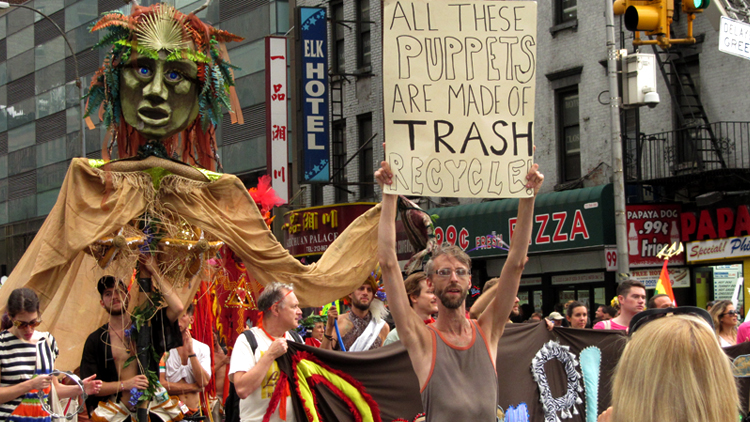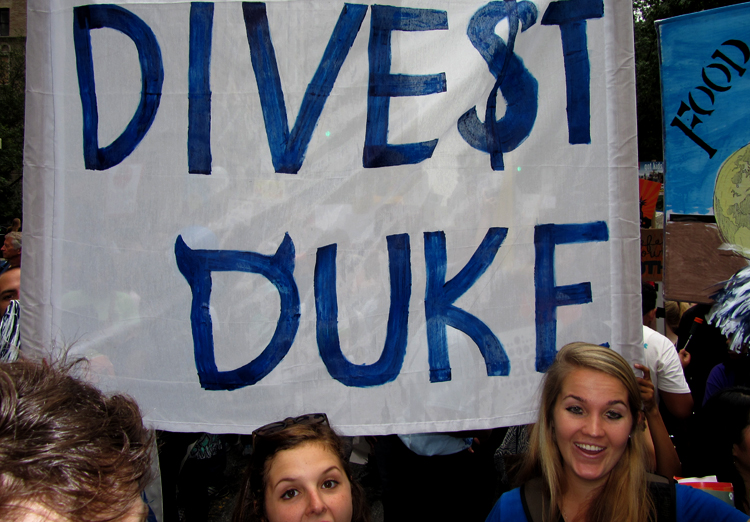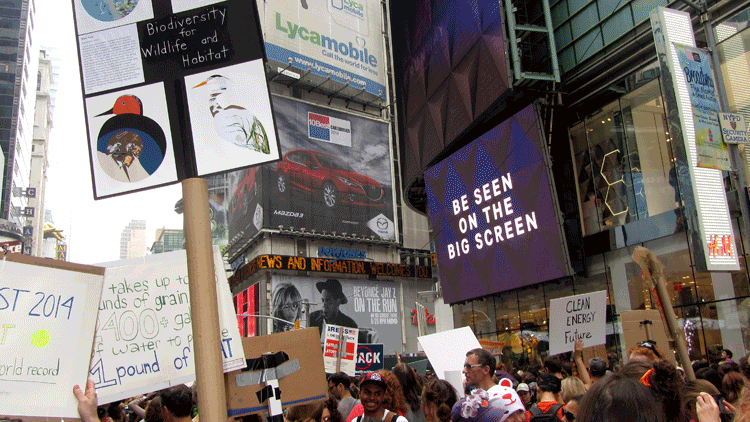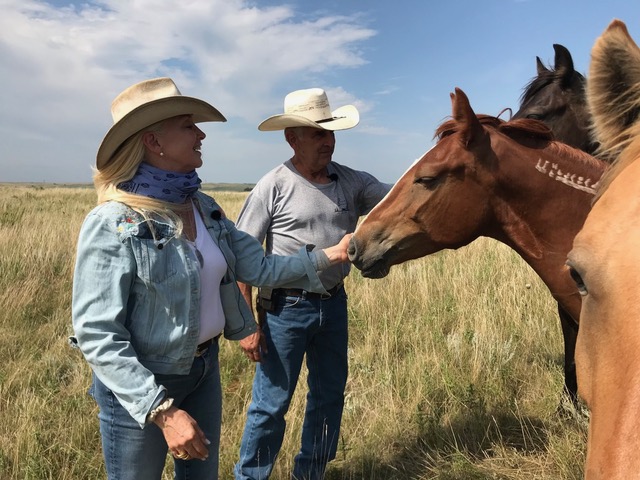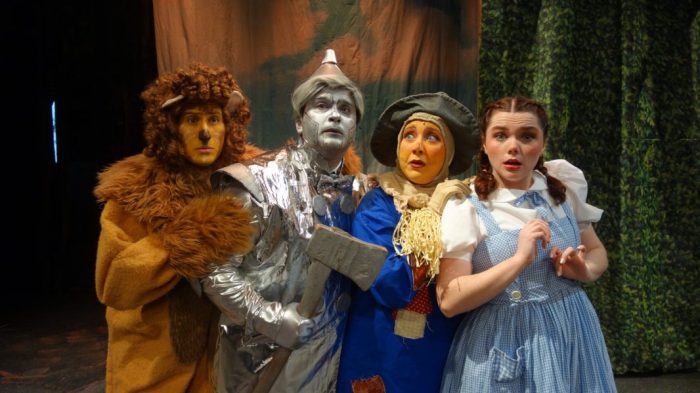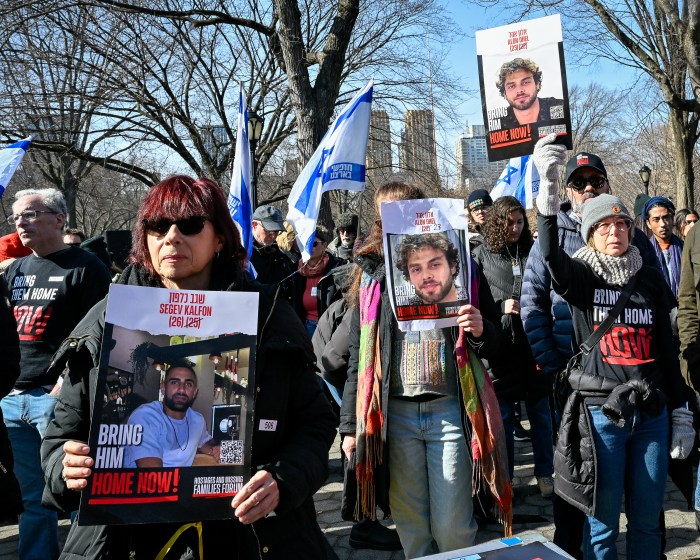A little after 5 o’clock Sunday the tail end of the People’s Climate March crossed 10th Avenue in Manhattan with a group of cops and the parade’s security marshals, recognizable in their day-glo green T-shirts, walking side by side as they held a yellow police ribbon stretched across 42nd Street. People had been on the move since 11:30 a.m. when they started from Central Park West and headed downtown.
Moments earlier an official text from the organizers had gone out to all the marshals lining the parade route that more than 310,000 people—possibly as many as 330,000—had participated, marking the event as one of the largest demonstrations in New York City history, certainly in recent years. Perhaps it actually did live up to the sponsors’ advance billing as one of the biggest outpourings of support for climate protection the world has ever seen. The turnout definitely exceeded their hopes.
All told, there were almost 2,700 climate change gatherings held Sunday in 156 countries. The marchers in Manhattan could see some of the other demonstrations in places like Rio, New Delhi and Melbourne being broadcast live on giant video screens set up along the parade route.
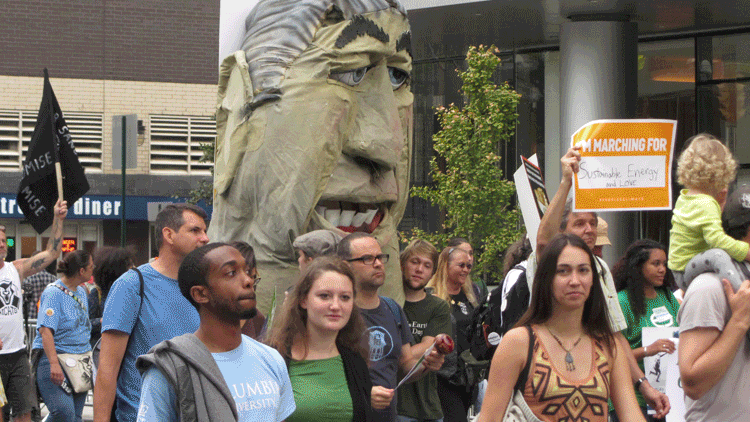
How much effect the march in Manhattan will have on delegates attending the United Nations Climate Summit, scheduled to start Tuesday, is up in the air. President Barack Obama is set to be there along with many of the world’s leaders, 126 in all. There are proposals to stop deforestation, to reduce carbon dioxide emissions drastically, to support clean energy, and end pollution of the air, land and sea. Getting developed countries and developing countries to agree will surely tax UN Secretary-General Ban Ki-moon, who joined the parade along with such luminaries like Leonardo DiCaprio, Mark Ruffalo, Sting, and Al Gore. To set a precedent, New York City Mayor Bill de Blasio announced Sunday that he was pledging the city to cut its greenhouse gases 80 percent by 2050.
The weather had to be on the minds of the marchers at Huntington Station in Long Island as parade participants watched the sun struggle to come out between the gray clouds while a fine mist fell. No rain had been forecast but the overcast sky didn’t bode well. Fortunately, the prediction held, but from the windows of the Long Island Rail Road train, Manhattan looked like it was shrouded in smog.
It was a mixed crowd of equally spirited passengers riding the LIRR into Penn Station Sunday morning. Some riders were clearly heading to the People’s Climate March because they wore T-shirts that said: “Hell, no, Monsanto!” (protesting the corporation’s genetically modified food research), while another person carried a rolled-up sign that read, “Some like it hot!” But other passengers were wearing the tell-tale blue jerseys signifying they were Giants’ fans, with numbers on their backs, like 90 for the Giants’ defensive end, Jason Pierre-Paul, because they were heading out to New Jersey for the New York Giants’ home game against the Texans at Met-Life Stadium that afternoon.
By 10:30 a.m. the sticky heat and humidity on the subway platforms at Penn Station were getting uncomfortable as participants congregated underground, waiting to catch an uptown train to the different assembly locations that groups ranging from environmental organizations to colleges, churches and political parties had set up along Central Park West between 59th and 86th Street.
At major access points like West 72nd Street police were only letting pedestrians through to the park. The open expanse leading from the subway station at Broadway gave a false illusion of mobility because the crowd packing the corner of Central Park West was practically impenetrable. And more people were arriving by the moment.
At 70th Street college students and alumni predominated. They’d come from places as far apart as Kalamazoo College in Michigan to the College of the Atlantic in Bar Harbor, Maine, and Duke University in North Carolina. Alumni from Antioch College in Yellow Springs, Ohio were expecting 55 students whose bus, subsidized by the Sierra Club, didn’t come for them until midnight Saturday. They were still an hour outside the city when the parade was scheduled to get underway. Eric Miller, an Antioch grad who helped coordinate his college’s cohort, said he and about other alumni had been ready to go since 10 a.m. But it had been nothing more than hurry up and wait.
Justin Adkins, a member of the social justice center at Williams College in northwestern Massachusetts, had left that morning at 5 a.m. with two busloads of 80 people. “I’ve had, like, a gallon of coffee!” he said.
Mark Dunn, an architect at the University of Massachusetts at Amherst tasked with making the campus buildings more sustainable, said he’d come with about 1,200 people from his area. “They had 24 buses from our valley and three towns to run down here,” he explained. “We got here around 9:30.” They left at 6 a.m. “I’m hoping it gets heard over on the East Side at the UN,” he said about the march. “Hopefully, the politicians will remember who they work for.”
Bret Hooper had come from Portland, Oregon because “as a private citizen, I’m concerned,” he said. “Of course, we’d like to see a movement grow and the world get more serious about climate change. We’ve got the world leaders here this week, and we hope to send a message to them that we need a consensus, and we need action!”
Johanna Starret, a mother from Knoxville, Tenn., had driven herself, her daughter Mallari, and a friend 14 hours to join the march, arriving late Friday night. “We’re here to represent our high school and the youth in Tennessee,” said her daughter, holding a poster signed by fellow students at Breardon High School who did not make the trip.
About 60 students had come from the Putney School in Vermont. “We have some people staying with us who’ve never been to New York before,” said Amy Goldin, a Brooklyn resident who was hosting a few students from the Putney School in Vermont and Hampshire College because she has a child at each place. Asked what the march meant to her, she replied, “It means making a statement and saving the future for our children.” And, she added with an admitted touch of irony, “She says tongue in cheek but meaning it. I’m just glad we can do something!”
There were toddlers strapped to their parents’ backs and senior citizens riding in wheel-chairs. There were brass bands and Buddhist monks banging drums. The creativity and diversity on display were inspiring and amusing. One man’s white T-shirt had a panda on the back saying, “Save the humans!” Another wore a shirt that said, “Ending world hunger one grilled cheese at a time.” A colorful group of women from the Center for Planetary Culture, a California think tank with an office in Manhattan, were dressed a little bit like mermaids. “Each one of us is one of the Earth’s oceans, and we’re united as the seas,” explained a woman who said she was representing the Aegean.

People wore costumes, carried giant papier-mache heads, a silver and black drone bomb balloon, a big black and white cow, and even a huge chalkboard.
The signs were in the thousands. One said, “Don’t be fossil fools!” Another read: “Jesus would drive a Prius!” A Williams College student carried this one: “The apocalypse should be caused by zombies, not us!” A silver-haired lady had a poster that said, “Either we control our emissions or we sleep with the fishes!” A man on a sidewalk on 42nd Street held a sign stuck to a cardboard tube that said, “Tree huggers are people huggers!” A more serious sign read: “We do not inherit the Earth—we borrow it from our children!”
There were chants that ran the gamut from the naïve to the angry, from honoring “Mother Nature” to attacking “capitalism for destroying” the world. Here’s a partial sample: “Hey, hey, ho, ho, fossil fuels have got to go!” “The people are rising! No more compromising!” “We are unstoppable! Another world is possible!” “Hey, Obama, we don’t want no climate drama!” “System change—not climate change!”
Outside the News Corporation building on 6th Avenue marchers shouted, “Fox News, can’t you see that there is no Planet B?” Some marchers joined in a call-and-response chant: “What does democracy look like? This is what democracy looks like!” A more activist bent went like this: “What do we want? Climate justice! When do we want it? Now!”
But one of the more amazing moments of the parade came when there was no noise at all. A minute before 1 o’clock people started holding up their hands, and shushing from block to block. Then a countdown commenced, and when it reached zero, the marchers were so silent only a cell phone pinging could be heard. It was an eerie feeling and an empowering one. From the blocks away uptown came a roar that gradually grew in intensity, sweeping through the parade like a wave of sound, as the marchers broke the silence with all the intensity they could muster. Drums pounded, horns blew and people screamed. And the march went on through the rest of the afternoon.
[Not a valid template]



